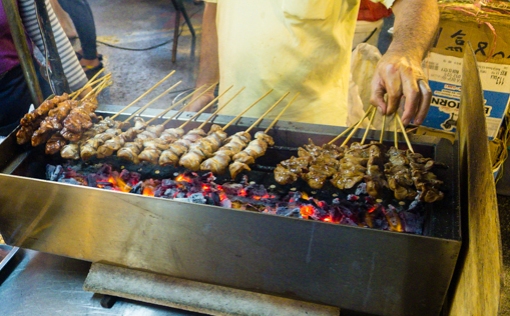We recently signed up for Hulu Plus. I(Chris) has been really excited about the possibility of accessing online the Criterion Collection via Hulu Plus, him being a Criterion fan.
Criterion is an American video-distribution company that sells “important classic and contemporary films” to film aficionados. It is noted for helping to standardize the letterbox format for widescreen films, bonus features, and special editions for home video. – Wikipedia
The first film we saw was Breathless (À Bout Souffle), a 1960 black-and-white piece directed by Jean-Luc Goddard, starring Jean Seberg and Jean-Paul Belmondo.
It is the first time I saw the entire film from beginning to end. I can see why people say it is a very cool film in many different ways.
To promote the film, Criterion puts a clip on Youtube and cites three reasons to watch it.
Many essays have been written about this renowned film as it is one of the earliest French New Wave film, a film noir, a jazzy soundtrack, and it pioneered a modern editing technique – the jump cut. Wong Kar-Wai cited it as an influence. This film is more than 50 years old.
The second film I saw this weekend from Criterion was Tie me up ! Tie me down ! (Atame !) made by Pedro Almodóvar in 1990. I saw it when it first came out.
This technicolor, slightly noirish comedy was apparently the first Almodovar’s film released in August 2014 under Criterion. Surprising that it took so long to happen for this Spanish master. Antonio Banderas and Victoria Abril are the leads.
Delightful and instantly recognizable art direction.
The choice of these two films for viewing over one weekend was purely coincidental. We are viewing Tie me up Tie me down 25 years after it was made, and it was made 30 years after Breathless. These are really quite old movies. But there are a few parallels in the narrative. SPOILER ALERT !
The male protagonist in both films came into town to look for a girl that he knew before. Both guys were small time criminal, stealing stuff everywhere they went as the need arose. Both guys insisted they loved their girl and wanted her to leave town with him in a stolen car. Both convinced their girl to sleep with them. However, the outcomes of the two films cannot be any more different.

Well, if we view some more interesting films, we will write about them here in the future.
These two films are classics (according to me).








































































































 .
.



